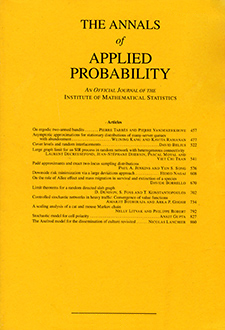Abstract
Suppose that a child is likely to be weaker than its parent and a child who is too weak will not reproduce. What is the condition for a family line to survive? Let
Citation
J. D. Biggins. Boris D. Lubachevsky. Adam Shwartz. Alan Weiss. "A Branching Random Walk with a Barrier." Ann. Appl. Probab. 1 (4) 573 - 581, November, 1991. https://doi.org/10.1214/aoap/1177005839
Information





